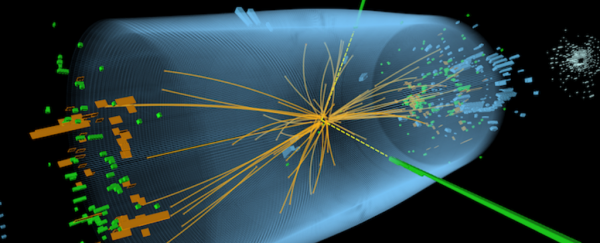Two separate teams of physicists working with the Large Hadron Collider in Switzerland have identified signs of a new fundamental particle of nature. While hypotheses abound as to what exactly this particle could be - if it exists at all - the most popular opinion seems to be that it's a heavier version of the Higgs boson, the particle that explains why other particles have mass.
"I don't think there is anyone around who thinks this is conclusive," one of the researchers, Kyle Cranmer from New York University, told The New York Times. "But it would be huge if true."
After a hiatus of more than two years, the LHC was fired up again in June to continue smashing particles together - this time at record-breaking energy levels of around 13 trillion electron volts. (In case you're wondering, an electron volt is a unit of energy equal to approximately 1.602×10-19 joules, and 6.5 trillion electron volts is twice the energy level used to detect the Higgs boson for the first time in 2012.)
Since then, both the CMS and ATLAS detectors at the LHC have recorded a spike in activity at a particular energy level, corresponding to around 750 giga electronvolts (GeV) - or roughly 750 billion electron volts.
Found hidden in the debris of proton-proton collisions, this unexplained signal could be the sign of a new particle that resembles the Higgs boson, only it'd be around 12 times heavier, with a mass of 1,500 GeV.
"When all the statistical effects are taken into consideration … the bump in the Atlas data had about a 1-in-93 chance of being a fluke - far stronger than the 1-in-3.5-million odds of mere chance, known as five-sigma, considered the gold standard for a discovery," Dennis Overbye writes for The New York Times. "That might not be enough to bother presenting in a talk, except for the fact that the competing CERN team, named CMS, found a bump in the same place."
That said, the statistical significance of what they found was still very low, with Davide Castelvecchi reporting for Nature that ATLAS detected about 40 pairs of photons above the numbers expected from the standard model of particle physics, and CMS saw only 10. When you consider that's based on data collected from some 400 trillion proton-proton collisions, it's safe to say these particles are either super rare, created under extremely difficult-to-recreate conditions, or don't exist.
We'll have a better idea of what's actually going on in about six months' time, when the teams are expected to have gathered around 10 times as much data as they do right now. But if they can confirm the existence of what one of the researchers, Maria Spiropulu from the California Institute of Technology (Caltech), called, "a 750-billion-electron-volt beast decaying to two photons", it'll be up to the theortical physists of the world to explain it.
